If steakhouses have taught us anything, it’s that meat and wine do quite well together. In fact, when the right wine is selected, both the wine in the glass and the protein on the plate can be enhanced, taking the meal to heavenly heights.
Related Reading
Pairing, however, is a very subjective topic riddled with stereotypes and made-up rules. Is there a playbook when it comes to matching a meat with a wine? No, not technically. Yet, as the experts we chatted with will confirm, there are certain routes you can go that will lead your palate to a harmonious and complementary sweet spot.
So, whether you’re grilling up a ribeye, preparing a rack of lamb, or getting down on some poultry, here’s what you ought to be sipping on the side to make the overall experience all the better.
Lean and Light, Fatty and Rich
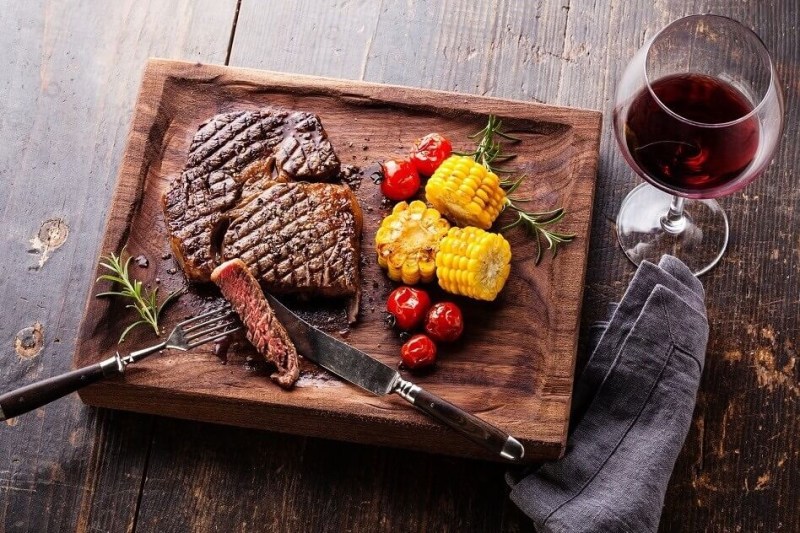
Dan Thiessen is a culinary industry veteran and present managing partner at Walla Walla Steak Company. One of his favorite things to do is throw a meat-centric dinner party and have his guests bring the wines of their choosing, shrouded in paper bags. They eat and drink and at the end of the night, the favorite wines are revealed—and it’s not always what you’d expect. Thiessen is the first to admit there’s no such thing as an across-the-board perfect pairing. But, there are some guidelines.
“Lean meats, lighter wines. Fattier and richer meats, bigger wines,” he says. In other words, a ribeye demands a hefty Merlot or Malbec. A lean filet mignon will fare better with something like Pinot Noir or even a Tempranillo. And there’s some science to it all as well.
Everyone has different taste buds, droolers and non-droolers—it’s really a thing!” Thiessen says. “For someone who is a ‘non-drooler,’ big wines will not be pleasant on their palate as the reproduction of saliva is slower than ‘droolers,'” he says, adding that it’s saliva that creates the insulation between tannins (the dry sensation in wine produced by grape skins, seeds, and stems) and taste buds. He says the proof is in the pudding: Try a first and second sip of a wine and see how they differ, even if just slightly.
“That’s why a big wine will go well with fattier proteins, the fat is replacing the saliva effects on the palate,” he adds. Saliva is the reason that wine tastes different on the second taste from the glass than the first!!
Focus on the Whole
Marsella Charron runs the wine list at Harbor House, a Michelin Star restaurant in California. She says there are some details people fail to take into account when pairing wine with meat. “In my opinion, the biggest misconception in pairing is to singularly focus on the ingredient rather than the preparation of the ingredient as well as the condiments, sauces, and texture of the dish,” she says.
For high quality meats that are lean, go with Rosé Champagne with nice fruit. “If there are a lot of nuanced spices in the dish, high-toned wines will work best to make the spices pop,” she says. “If you have roasted, or robust flavors, heavier wines will work best. If your condiment is chutney or a fresh herb-based sauce, you want to pair it with a bright wine.”
Charron says her favorite part of pairing is the surprise element. That, and doing the research (aka, drinking wine). There’s a consistency angle, too. “If you have a rich, thicker sauce you will want to match that texture,” she suggests.
Lamb
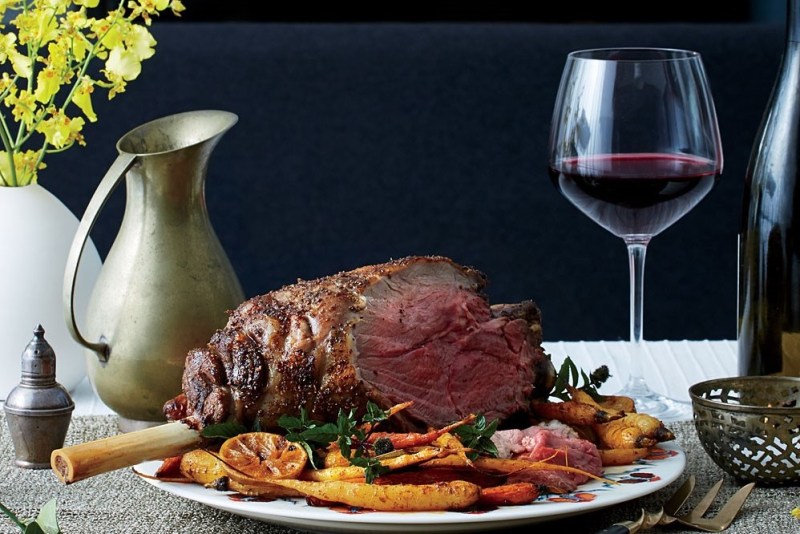
Rusty Rastello is the wine director at SingleThread in Healdsburg, in the heart of California wine country. He likes to play off the uniqueness of a meat like lamb, with both red and white wines. “My go-to’s with lamb are either Syrah or Cabernet Franc from France. A cool-climate Syrah mellows out the gaminess in lamb and brings out the richer flavors—a true perfect pairing,” he says. Rastello adds that the Cab Frans with green herbal characteristics tend to do best, as they align with one of lamb’s trusty sidekicks. “Imagine heaving that mint jelly in your wine glass,” he advises.
What about whites? “You can definitely go with a white wine with lamb, depending on how it is cooked. If it is grilled, it needs something that has been aged in oak like Bordeaux Blanc or Sauvignon Blanc from Napa on the richer side,” he says. “Or, you can go a little mad scientist with a skin-fermented white wine from Northern Italy.”
Poultry
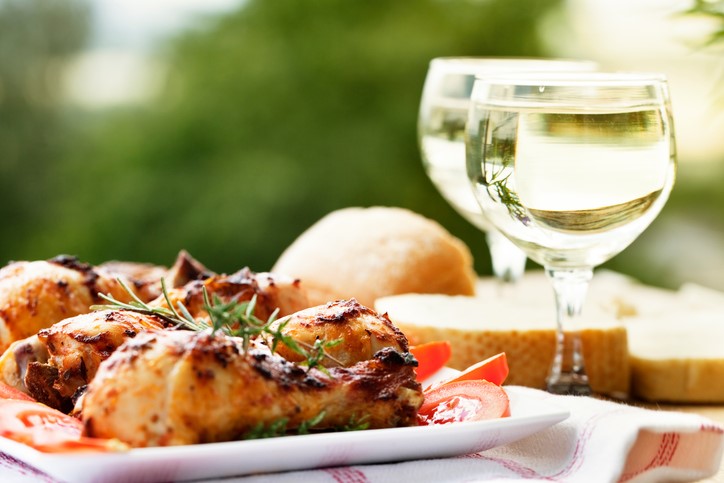
Poulty is sort of an in-between when it comes to pairing and can oscillate between white, pink, and red wines depending on how it is prepared. Chardonnay usually covers the bases, as it’s often rich enough to stand up to grilled or roasted chicken while having enough restraint and acidity to do well with something like chicken salad.
For game birds, play off the gaminess and go with wines with a bit of funk. Think Burgundy, or certain Cabernet Sauvignon’s or a Mourvédre. Try an orange wine, or a funkier white, like an oxidized wine from the Jura in France.
Fish
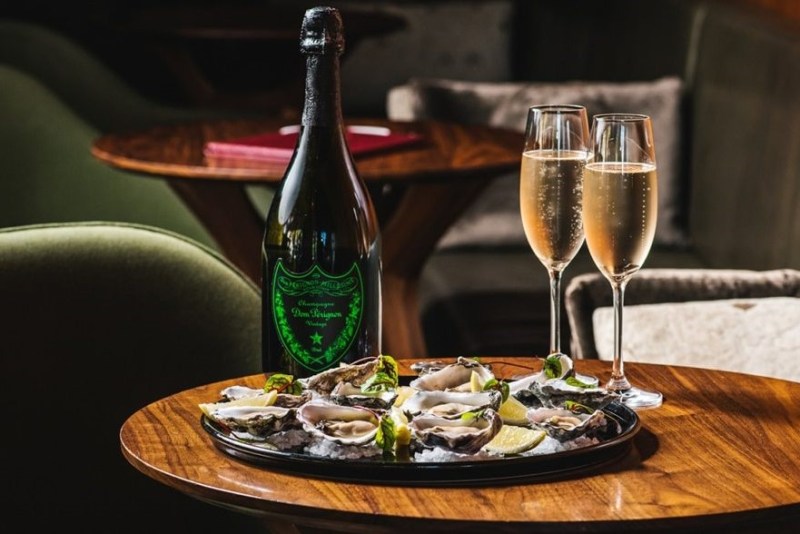
Typically on the lighter side, fish is often the stuff best suited for white and pink wines. Wines like Pinot Gris and Sauv Blanc tend to do well here. Richer fish like halibut beg for something a little bigger, like Marsanne or Viognier. And don’t forget light and bright reds like Beaujolais, Zweigelt, Lambrusco, or even younger bottlings of Valpolicella.
Darker fish types like salmon do excellently with Pinot Noir while spicier dishes like fish stews and the like do well with earthier, spice-driven reds such as a Rioja or Tannat.
Smoked Meats
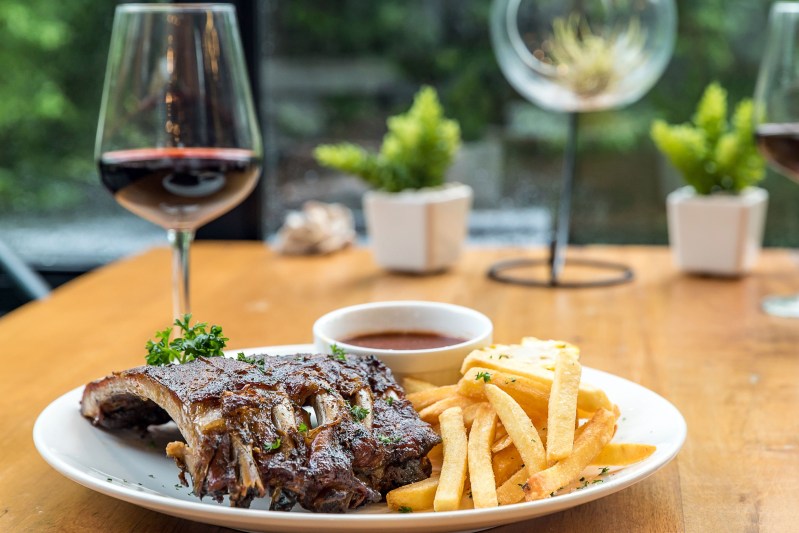
Because smoked meats tend to carry such a distinctive, often powerful flavor, additional guidance might be needed in the category. A safe bet is to play off of the smokiness, with savory wines like a good Italian Sangiovese or Nebbiolo, or perhaps a Carménère from South America. Charron suggests something with a strong oak presence with smoked meats, or a red or white that’s aged some.
An excellent resource is Fire + Wine, a cookbook with wine pairings by Mary Cressler and Sean Martin. The duo will point your palate in the right direction when you’re wondering what to have with smoked pork chops or smoked cedar plank salmon.


